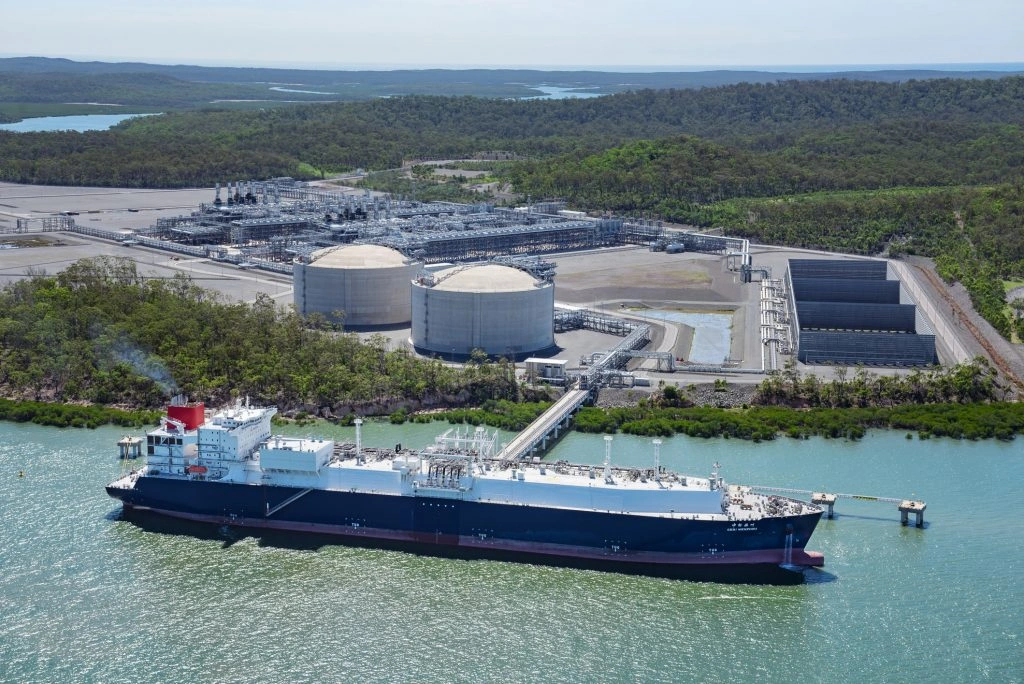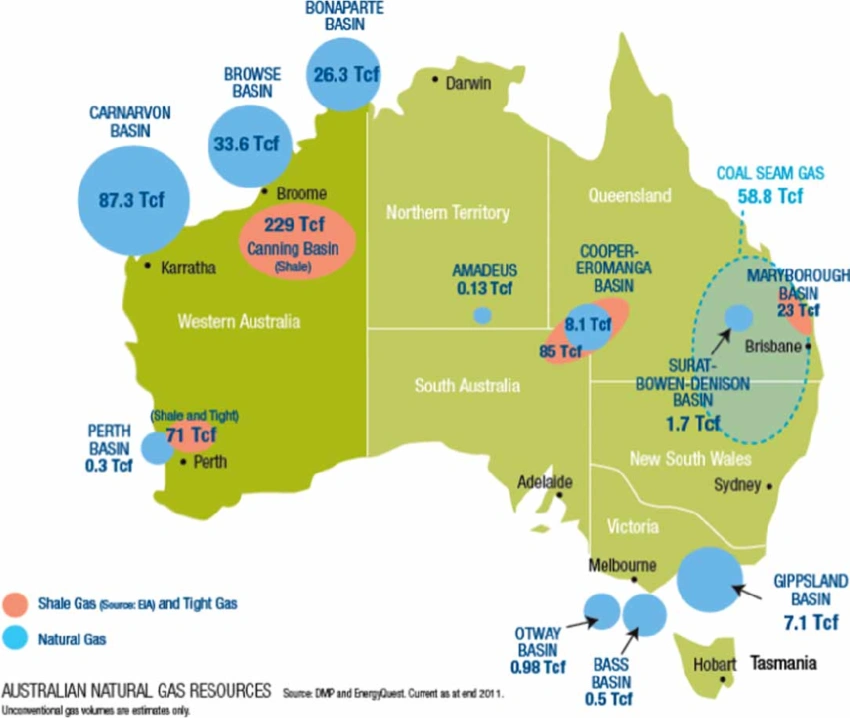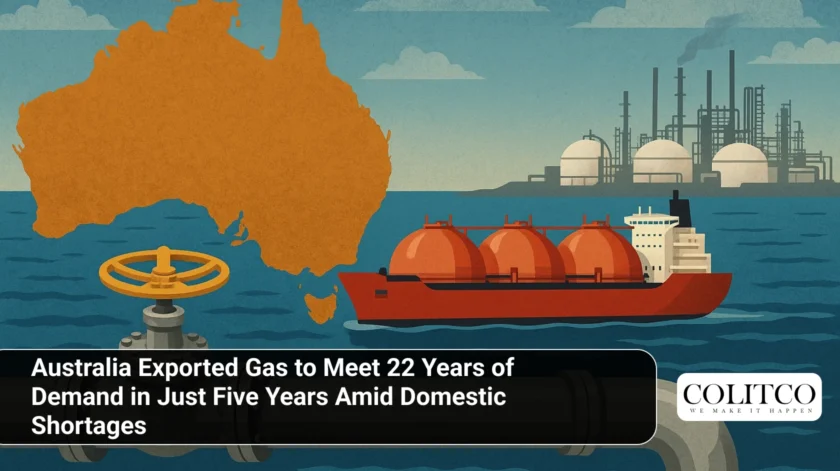Australia exported 22 years’ worth of gas in just five years as domestic shortages continue to threaten supply. Recent analysis from the Australia Institute highlights the impact of export decisions on households and manufacturers across the nation. Australians pay record gas prices while supply struggles to match demand.

LNG export ship at an Australian Port
Record Volumes Leave Australia Exposed
Australia exported enough gas to meet local demand for 22 years within a five-year window, leaving reserves depleted and vulnerable to further shortages. In 2023-24, the LNG export industry used 83% of all natural gas extracted across the country. The share of exports dwarfs domestic consumption, including power plants, manufacturing and households.
Gas Industry Priorities
The gas industry consumed more gas processing exports than the entire country used for domestic purposes. Processing alone accounted for nine times more gas than electricity generation, thirteen times more than Australian manufacturing, and thirty times more than domestic households each year. These export commitments now continue at a critical moment for local supply.
Local Shortages and Rising Costs
Wholesale gas prices on the east coast of Australia tripled over recent years, with people now paying four to seven times more than gas users in the USA, Russia, Qatar and Canada. Households and manufacturers struggle to manage soaring energy costs as local reserves face rapid depletion. BlueScope Steel’s chief executive Mark Vassella warned the broken gas market could derail local industry and cost thousands of jobs.
Failed Safeguards and Ineffective Policy
The government introduced policy measures, including agreements with LNG exporters aimed at safeguarding domestic supply. New policies forced a minimum amount of uncontracted gas back into the local market, but these measures failed to deliver meaningful relief. The Australian Competition and Consumer Commission (ACCC) stated that these interventions may even have increased the risk of further shortages, particularly across southern Australia in 2026.
Export Growth at Domestic Expense
Australia’s export earnings from energy commodities reached A$238.7 billion, a 17% increase year-on-year, primarily from LNG and thermal coal. Australia held its rank as the third largest exporter of LNG globally, behind only Qatar and the United States. About 73% of all locally produced natural gas was exported, with the market continuing to favour international commitments over local supply.
East Coast Vulnerabilities
Australia’s gas reserves are concentrated in the north-west, far from the high-use population centres of the south-east. Supply constraints make it difficult to move gas to regions where shortages are most severe. Manufacturers have called for east coast reservation policies and a price cap to ensure local buyers retain access to affordable energy. Industry groups argue that reserving even one-third of east coast gas production would meet local demand while still supporting the majority of exports.

Australia’s natural gas reserves
Experts Challenge Government Claims
Government statements suggesting new gas projects are needed to support renewables and Japan’s energy security have been challenged by industry experts and analysts. Air Vice-Marshal (Ret) John Blackburn AO accused the government of placing multinational interests ahead of long-term national energy security. Analysis found redirecting gas spot sales from exports to the domestic market could ease impending shortages. Spot sales made up 25% of exports in 2024, a volume equal to Australia’s total domestic use.
Also Read: New Zealand International Convention Centre Rebuild Reaches Completion Amid Legal Backdrop
Community Impact and Ongoing Uncertainty
Australians pay more for gas than residents in most other gas-rich nations, with prices reaching up to seven times average rates abroad. Local industries voice concern about job losses and shrinking economic opportunities in manufacturing and energy-intensive sectors. Despite claims of improved supply, shortages remain a constant threat facing households and businesses.
Calls for Urgent Reform
Industry, political leaders and community groups press for urgent reforms to reserve gas for the domestic market. Many stress the need for flexible and reliable regulatory mechanisms to protect local supply in future years. The next generation of policy must address underlying issues and ensure that Australia’s energy wealth benefits both domestic users and the export sector.
Australia continues to export record volumes of natural gas as local supply faces mounting pressure. Both government and industry acknowledge the need for reform amid ongoing risks to energy security and economic stability.












